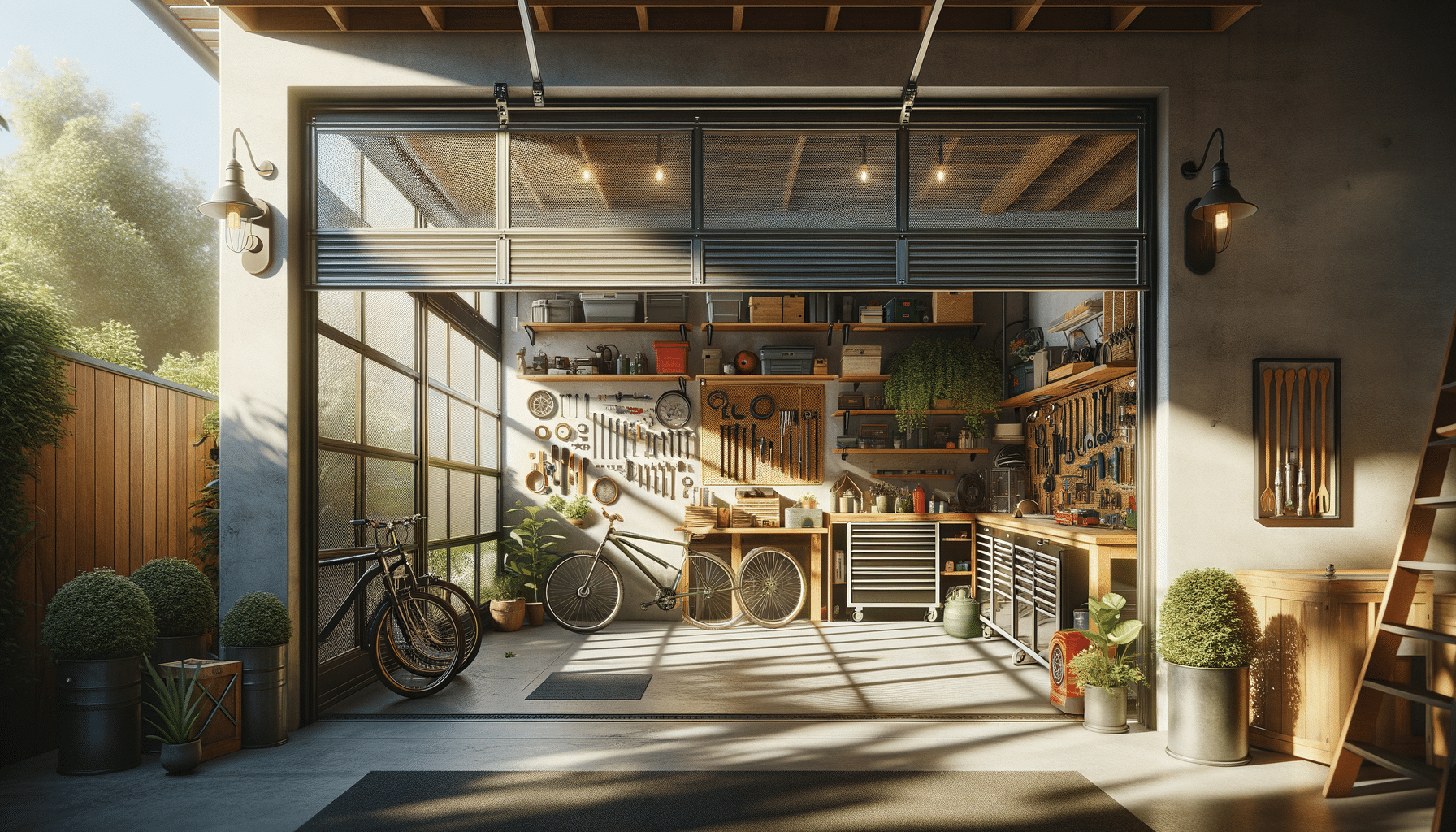
Enhancing Your Garage with Door Screens
Introduction to Garage Door Screens
Garage door screens are a versatile addition to any home, offering both functionality and style. These screens serve as a practical solution for homeowners looking to expand their living space, providing a barrier against insects while allowing fresh air to circulate. With the increasing trend of utilizing garages for more than just storage, garage door screens have become an essential feature for many households.
These screens are not just about keeping bugs out; they also help in maintaining a comfortable environment within the garage. Whether you’re using your garage as a workshop, a gym, or a gathering spot, a garage door screen can significantly enhance the usability of the space. Let’s delve into the various aspects of garage door screens, exploring their benefits, types, installation process, and maintenance tips.
Benefits of Installing Garage Door Screens
Garage door screens offer a multitude of benefits that make them a worthwhile investment for any homeowner. Here are some key advantages:
- Enhanced Ventilation: By allowing fresh air to flow freely, garage door screens help in reducing humidity and improving air quality inside the garage.
- Pest Control: These screens act as a barrier against insects and pests, making the garage a more comfortable and hygienic space.
- Increased Privacy: While allowing visibility from the inside, garage door screens can obscure the view from outside, providing an added layer of privacy.
- Energy Efficiency: By facilitating natural ventilation, garage door screens can help in reducing the reliance on air conditioning, leading to energy savings.
Overall, garage door screens are a practical solution for enhancing the functionality and comfort of your garage space.
Types of Garage Door Screens
When it comes to garage door screens, homeowners have a variety of options to choose from, each offering unique features and benefits. Here are some popular types:
- Retractable Screens: These screens can be easily rolled up when not in use, providing convenience and flexibility. They are ideal for homeowners who want a seamless transition between open and closed states.
- Sliding Screens: Similar to sliding doors, these screens move horizontally and are perfect for garages with limited space around the doorway.
- Magnetic Screens: Featuring magnetic closures, these screens are easy to install and use, making them a popular choice for DIY enthusiasts.
- Custom-Built Screens: Tailored to fit specific garage door sizes and styles, custom-built screens offer a perfect fit and finish, enhancing the overall aesthetic appeal of the garage.
Choosing the right type of garage door screen depends on your specific needs, budget, and the design of your garage.
Installation Process of Garage Door Screens
Installing a garage door screen can be a straightforward process, especially if you opt for DIY-friendly options like magnetic or retractable screens. Here’s a general guide to help you through the installation:
- Measure the Doorway: Accurate measurements of your garage door opening are crucial to ensure a proper fit for the screen.
- Select the Screen Type: Based on your needs and preferences, choose the appropriate type of screen.
- Prepare the Area: Clear the garage doorway of any obstructions and clean the surfaces where the screen will be mounted.
- Install the Screen: Follow the manufacturer’s instructions for installing the screen, ensuring all components are securely attached.
- Test the Screen: Once installed, test the screen to ensure it operates smoothly and effectively.
While some screens can be installed with basic tools and minimal effort, others may require professional installation to ensure optimal performance and longevity.
Maintenance Tips for Garage Door Screens
To keep your garage door screen in top condition, regular maintenance is essential. Here are some tips to help you maintain your screen:
- Regular Cleaning: Dust and debris can accumulate on the screen over time. Use a soft brush or cloth to clean the screen periodically.
- Inspect for Damage: Regularly check for any signs of wear or damage, such as tears or loose fittings, and address them promptly to prevent further issues.
- Lubricate Moving Parts: If your screen has moving parts, such as tracks or rollers, ensure they are well-lubricated to maintain smooth operation.
- Store Properly: If your screen is retractable, ensure it is fully retracted and stored properly when not in use to prevent damage.
By following these maintenance tips, you can ensure that your garage door screen remains functional and effective for years to come.


